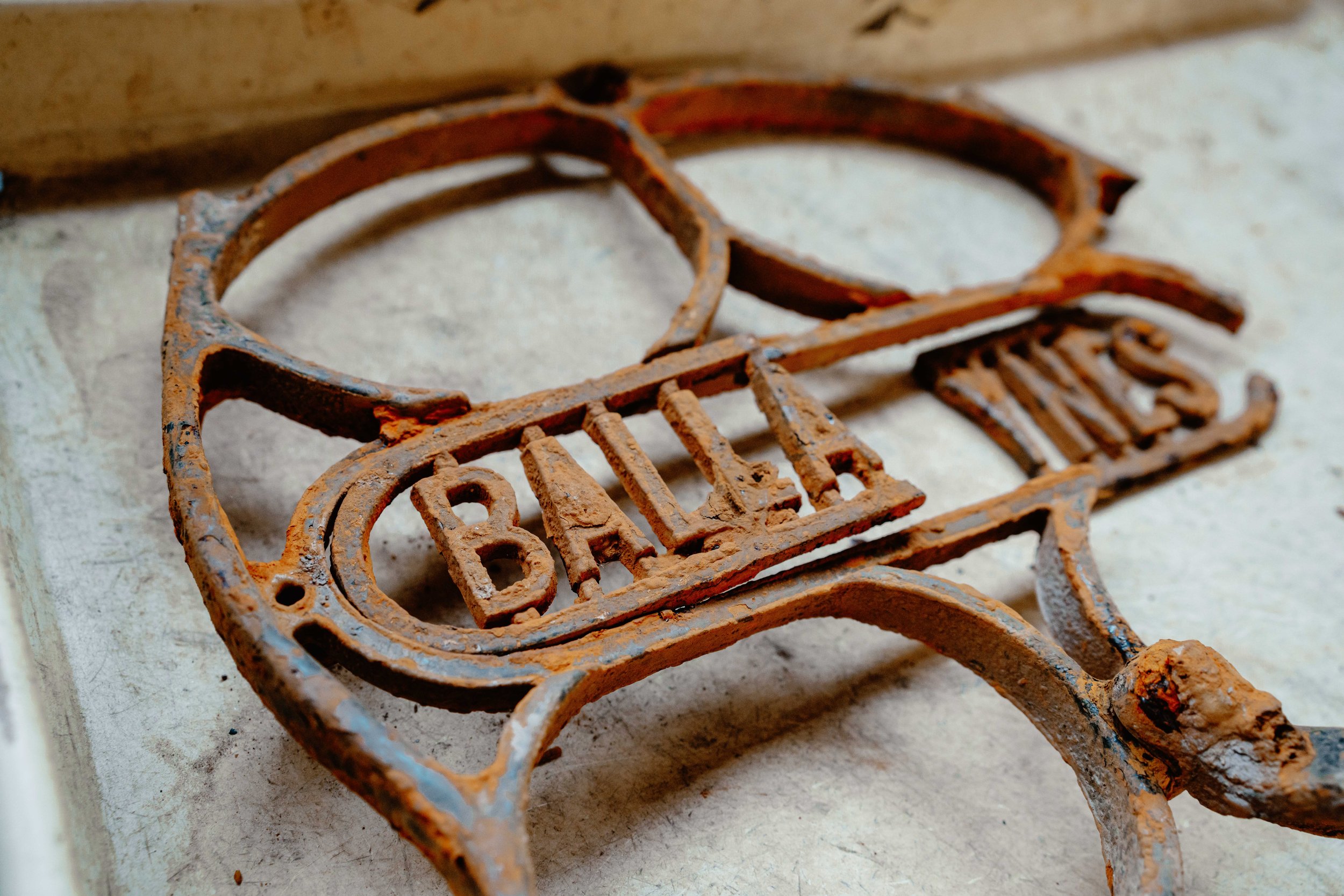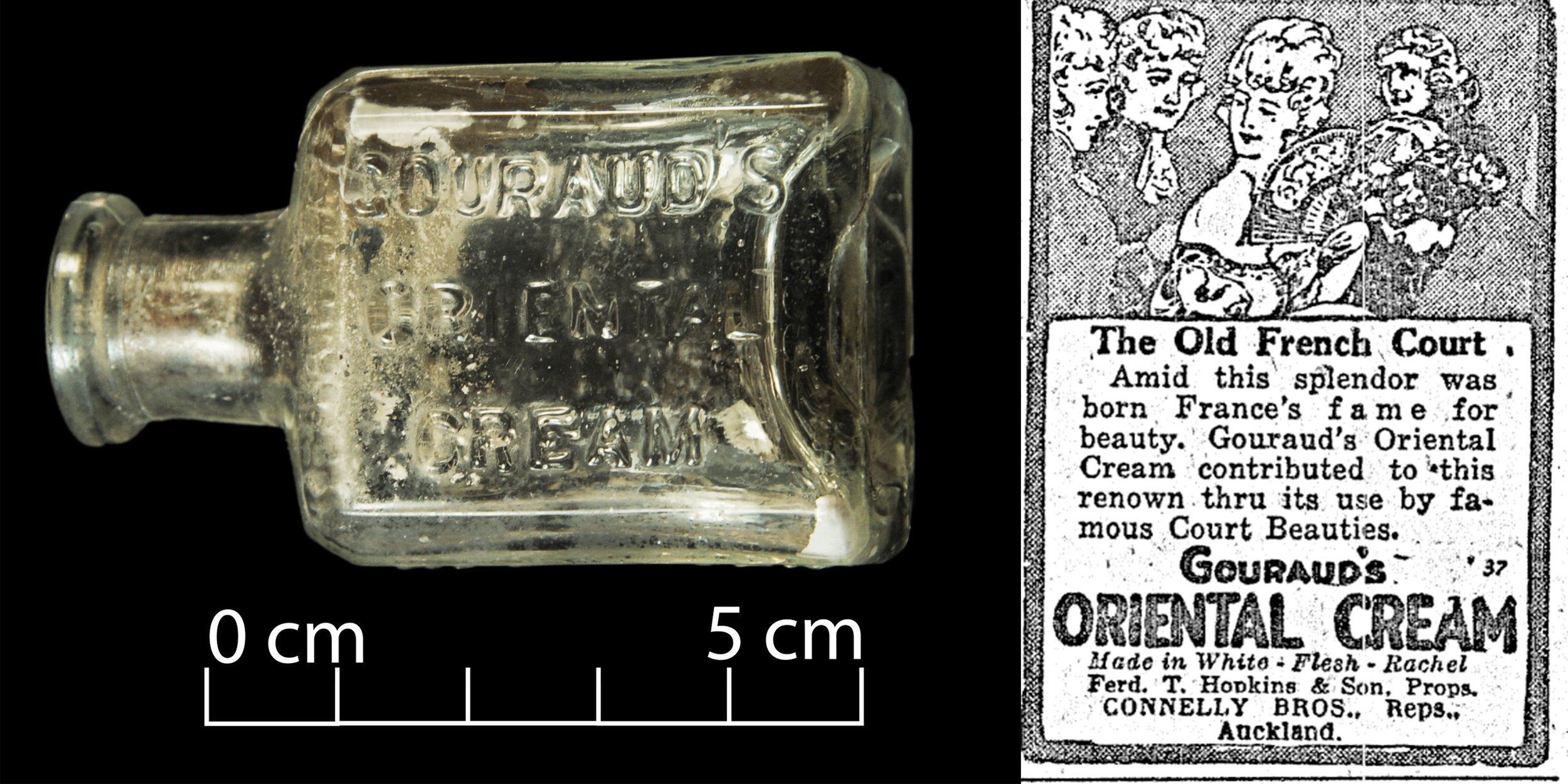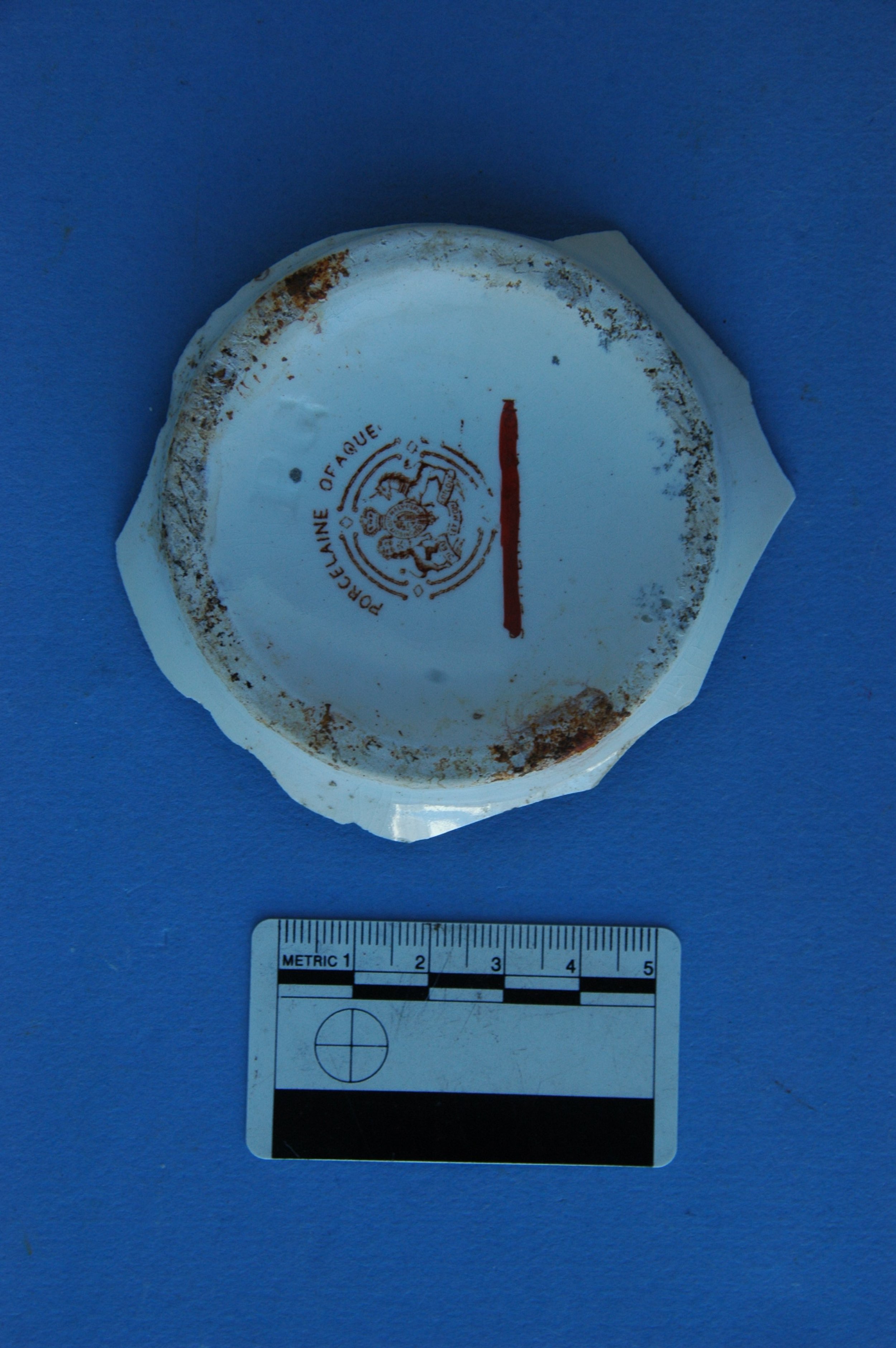For something colloquially referred to as ‘the convenience’, toilets in 19th century Christchurch were often anything but. There were the smells, the difficulties of dealing with the waste, their role in the spread of deadly diseases and, even once they moved inside, their location. Today, many of us regard the indoor toilet as a fundamental necessity – ideally, it will flush, be connected to a sewerage system (but see also composting toilets) and be conveniently located. Oh, and, very likely, there will be more than one toilet. None of these things were standard in houses in 19th century Christchurch. This blog grew from my curiosity about when this did become the norm. Spoiler alert: I still don’t know the answer to this question, but I did learn some quite interesting things along the way.
Before toilets moved into houses (as it were), they were of course outside, and chamber pots were used in the house, particularly overnight or, as in this case, by children. You can imagine how delighted we were to find a chamber pot in a privy pit. Image: Ōtautahi Christchurch archaeological archive.
The only original toilet I’ve found in a 19th century house. This water closet had been modified, but water would have been tipped into the small draw visible in the middle. Image: K. Watson, Ōtautahi Christchurch archaeological archive.
I really should’ve learned my lesson with these seemingly simple questions. Although, to be fair, I already knew what the first difficulty was with answering this one. Not only is it highly unusual for an original toilet to survive in a house from the 19th century, even the part of the house it was in is likely to have been heavily modified since then. As such, it’s nigh on impossible to use buildings archaeology to investigate this question. Regular below ground archaeology, though, does provide some insights. Some of my favourite historical sources – house plans and 19th century newspapers – are also useful. But the available architectural plans (for Christchurch) date from the early 1880s and later and were drawn for the wealthy, so it’s a fairly skewed sample. Searching the newspapers was complicated by the fact you can’t search for “w c”, the abbreviation commonly used for a water closet (Papers Past requires at least three letters in a search term – and, yes, there are workarounds). And these results were inevitably skewed, too, again by available funds but also by what people thought was important to mention in a real estate advertisement.
Here’s what I learnt.
Water closets were available to purchase in Christchurch (or Lyttelton, in this specific example) from 1851 (Lyttelton Times 9/8/1851: 4). And they were being made in the city from at least 1863 (Lyttelton Times 7/1/1863: 1). Also, portable water closets were a thing (Lyttelton Times 22/6/1859: 6). Which perplexed me, given the somewhat essential requirement for water. The first house sale or rental notice that I found that mentions a water closet as a room dates to 1883 (Press 14/7/1883: 4). This was about the same time that it became possible to connect a water closet to the sewerage system (see the table below for information about the extent of the sewerage system at the time; Press 30/1/1884: 3). However, Dr Courtney Nedwell, medical officer to the Board of Health in 1884, noted that the cost of installing a water closet “will prohibit their use becoming general” (Press 30/1/1884: 3). It’s not clear, though, whether it’s the water closets themselves that were expensive or the sewerage connection (it wasn’t necessary to have a connection to have a functioning water closet, although it was surely a factor – as was a suitable water supply).
Details about the sewerage network and connections to it across Christchurch. Image: Press 30/1/1884: 3.
By 1890, there were 648 water closets connected to the sewerage system in Christchurch, in 217 houses (Star (Christchurch) 12/2/1890: 4). Indicating that most of these houses probably had more than one water closet. And, more importantly for answering my question, indicating that the distribution of toilets was not exactly what you might call ‘even’. The article doesn’t note how many houses had water closets that weren’t connected to the sewerage system, however, which would provide a more fulsome picture of the state of play. By 1903, 3436 houses were connected to the sewerage system, 1276 of which had a water closet (Press 9/9/1903: 7).
A surprisingly scenic chamber pot. Chamber pots peak in the archaeological record in the 1860s and 1870s, with their discard declining after this, as toilets begin to be added to houses. Image: J. Garland, Ōtautahi Christchurch archaeological archive.
To my surprise, of the 34 house plans I looked at, 10 did not have a toilet, including some of those built in the early 20th century (these houses were built between 1883 and 1904). The mere fact of these people commissioning an architect indicates that expense probably wasn’t the reason for this absence. And some of these houses sans toilet were certainly big grand homes. It’s possible that not being able to connect to a sewer was a contributing factor, but the location information available isn’t specific enough to be able to determine this – although the house described as being “near Rangiora” clearly wouldn’t have had this option (Armson Collins 1885).
Toilets moved into the house with varying degrees of, well, convenience. Some were located at the rear of the house – out of sight, out of mind, but also adjacent to all other service rooms and, more importantly, rooms where water was required, thus reducing plumbing costs. What’s more striking, however, are the number that were in the house but could only be accessed externally. Some of these were clearly toilets for use by servants, but others were the only toilet in the house, and these were in large, grand houses with two stories (e.g. Armson Collins 1898). Chamber pots or commodes probably remained in use in these houses, because who wants to get up in the middle of a cold frosty Christchurch night to creep through the house by candlelight to go outside to go the toilet? (Although, modern sensitivities may make this seem preferable to the alternative.) Just over half of the two-storeyed houses had a toilet on the first floor.
Another rather pretty chamber pot. Many were much plainer than the examples shown here. Image: J. Garland, Ōtautahi Christchurch archaeological archive.
The architectural plans are quite detailed, and show the actual form of the toilet installed. Up until c.1892, toilets were boxed in, a feature designed to hide the associated pipe work and paraphernalia (Ragland 2004: 59). The first plan showing a pedestal toilet dates to 1895 – this would have been of the same (or very similar) design as a modern toilet, with the pipes contained in the pedestal (Armson Collins 1895, Ragland 2004: 59). This toilet also happens to be in the bathroom, another first. People did continue to install boxed-in toilets, however (e.g. Armson Collins 1903, 1904).
Part of a Doulton toilet found on a site in Christchurch, made between 1882 and 1891. Image: J. Garland, Ōtautahi Christchurch archaeological archive.
The plans also clearly show the presence – or absence – of handbasins. To the modern eye, it seems quite shocking that very few of the rooms designated “W C” had a sink. And often there wasn’t even one nearby, although some WCs were next to the housemaid’s closet (used for storing cleaning equipment), which in some instances had an external sink. Yes, a sink on the outside of the house, and these were usually on the first floor of the house (Armson Collins 1884). In the late 19th century, however, the lavatory appears. Now, this confused me. I thought ‘lavatory’ was another name for a toilet. And it can be. But it was originally for washing. By 1882, the word was used to encompass a place to wash and a toilet (Oxford University Press n.d.). It’s clear from the architectural plans, however, that it was generally used here to refer to a washroom, and the only fixture in the room was a handbasin (e.g. Armson Collins 1899, 1902). Only a handful of houses had a lavatory, and these were all on the ground floor.
To return to my original question: when did toilets become commonplace in houses in Christchurch? Well, not until some time in the 20th century. Although the presence of inside toilets was becoming more widespread by the late 19th century, it was to be some time before they were the norm. While one of the reasons for this is likely to have been a lack of suitable infrastructure, the evidence from architectural plans also suggests that there may have been fears and suspicions about having toilets indoors, related to the smells and perhaps ongoing misconceptions about miasmas and the spread of disease. Surely, though, the humble chamber pot (or even the slightly more salubrious commode) would have been even more concerning from this point of view?
Katharine Watson
References
Armson Collins, 1884. New Deanery building – No. 1. MB 1418 Armson – Collins Architectural Drawing Collection. Ref. code: 159646. Macmillan Brown Library, University of Canterbury.
Armson Collins, 1885. Arthur T. Chapman – house – No. 1. MB 1418 Armson – Collins Architectural Drawing Collection. Ref. code: 159650. Macmillan Brown Library, University of Canterbury.
Armson Collins, 1889. G. E. Way Esq. house. MB 1418 Armson – Collins Architectural Drawing Collection. Ref. code: 158811. Macmillan Brown Library, University of Canterbury.
Armson Collins, 1895. Dr de Renzi house – No. 1. MB 1418 Armson – Collins Architectural Drawing Collection. Ref. code: 15880. Macmillan Brown Library, University of Canterbury.
Armson Collins, 1899. C. J. Price Esq. – house. MB 1418 Armson – Collins Architectural Drawing Collection. Ref. code: 158831. Macmillan Brown Library, University of Canterbury.
Armson Collins, 1902. Thomas Teschemaker Esq house. MB 1418 Armson – Collins Architectural Drawing Collection. Ref. code: 158874. Macmillan Brown Library, University of Canterbury.
Armson Collins, 1903. Mr W H Triggs. MB 1418 Armson – Collins Architectural Drawing Collection. Ref. code: 158882. Macmillan Brown Library, University of Canterbury.
Armson Collins, 1904. A M Paterson Esq house. MB 1418 Armson – Collins Architectural Drawing Collection. Ref. code: 158880. Macmillan Brown Library, University of Canterbury.
Lyttelton Times. [online] Available at: paperspast.natlib.govt.nz/newspapers
Oxford University Press, n.d.. Lavatory, n., 1.a. In Oxford English dictionary. Retrieved April 10, 2025, from https://doi.org/10.1093/OED/9241021341
Press. [online] Available at: paperspast.natlib.govt.nz/newspapers
Ragland, Johnny, 2004. The Hidden Room: A Short History of the ‘Privy’. Unpublished report.
Star (Christchurch). [online] Available at: paperspast.natlib.govt.nz/newspapers
Banner image: J. Garland, Ōtautahi Christchurch archaeological archive.
























































